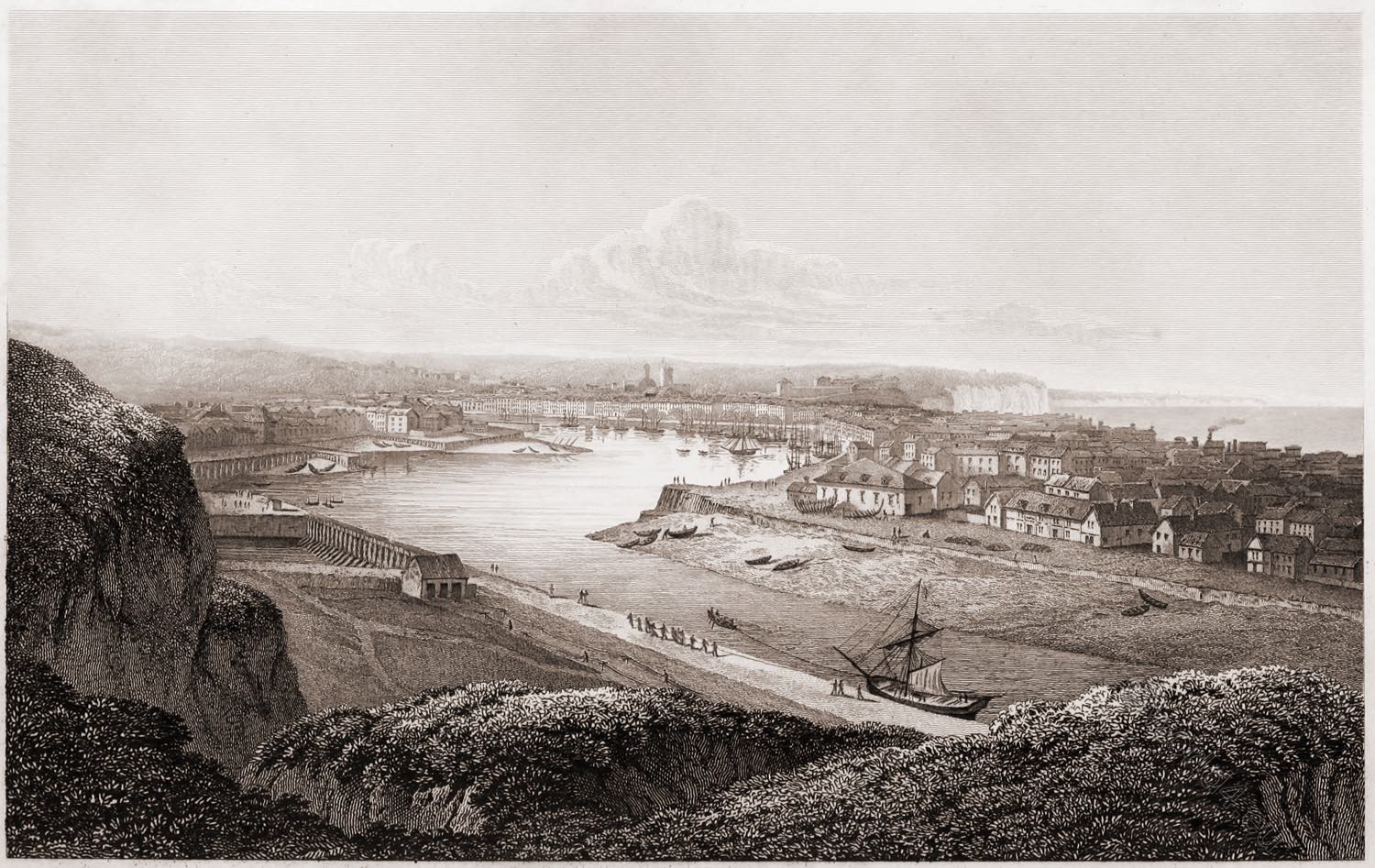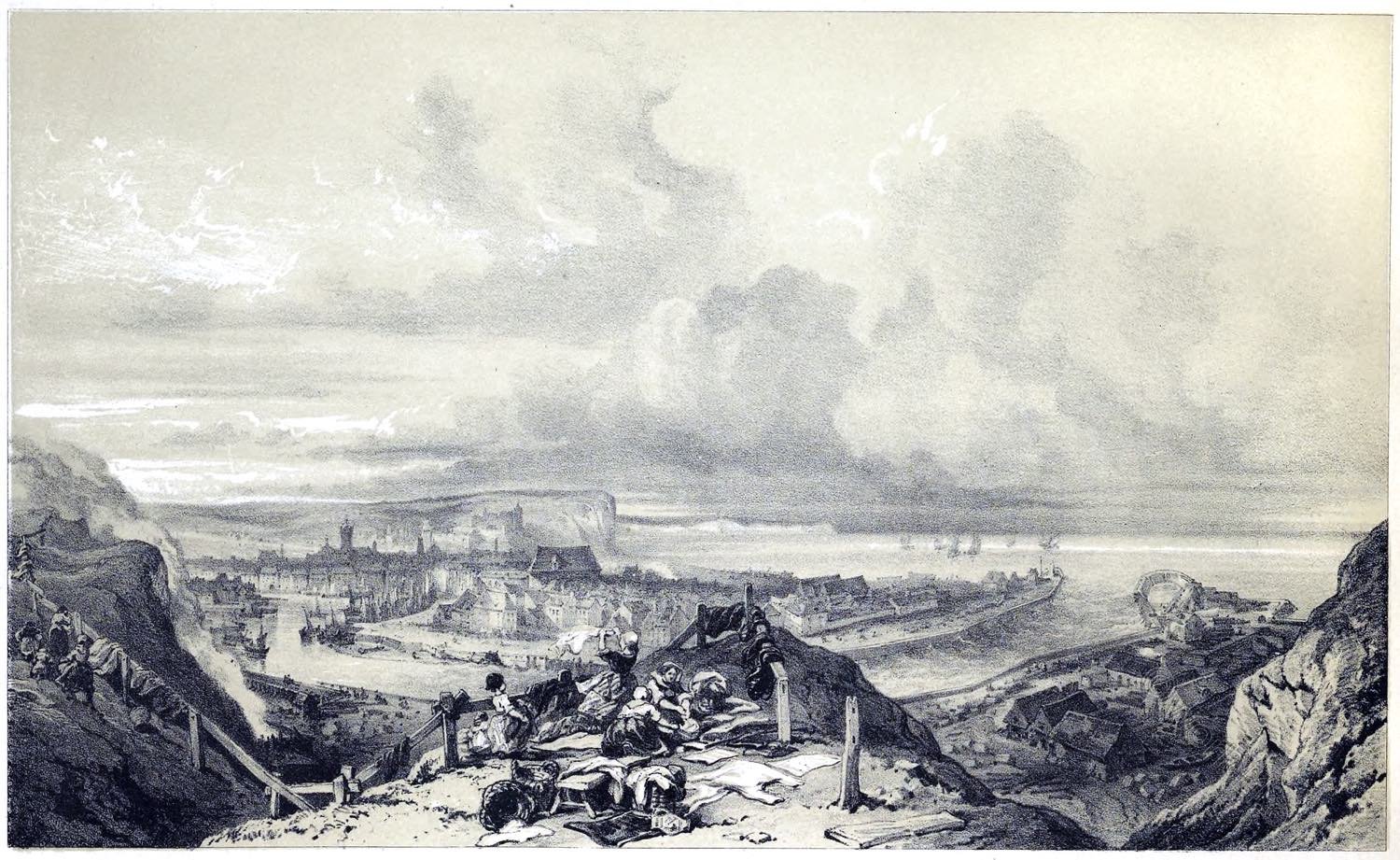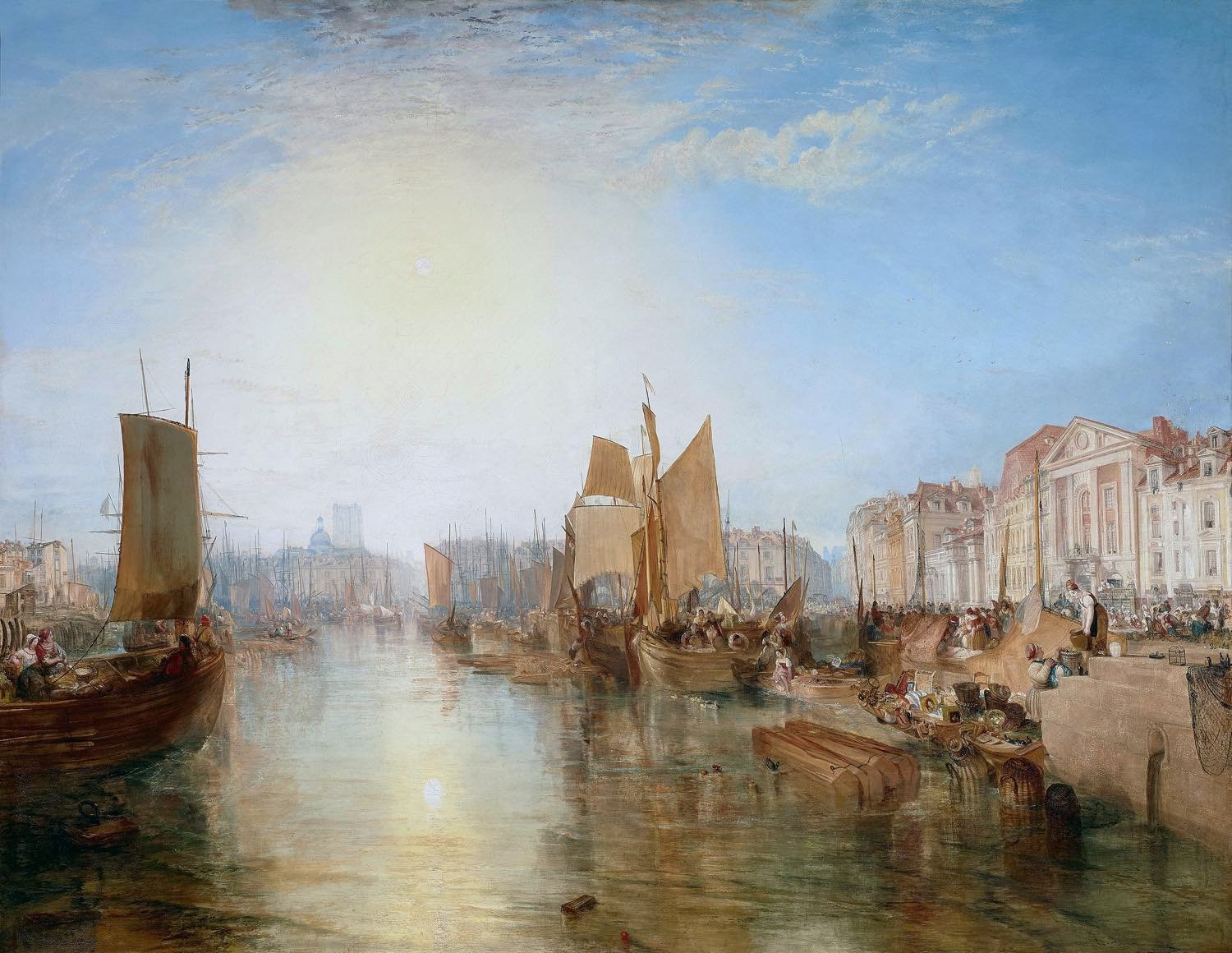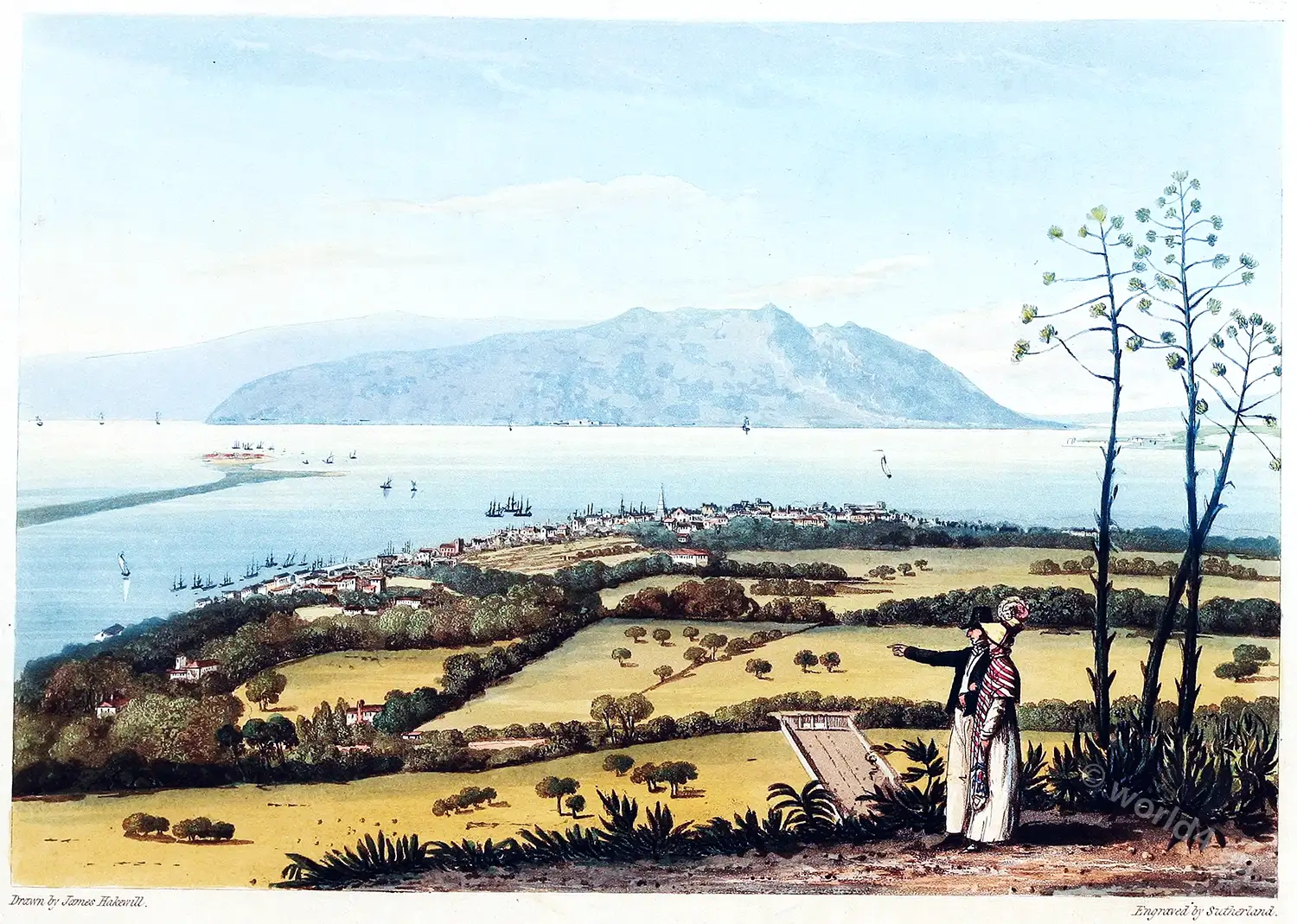
Dieppe is a maritime and fishing port on the Alabaster Coast in the Seine-Maritime department in the Normandy region, where the River Arques flows into the English Channel. Opposite it, on the English side of the channel, is Newhaven, East Sussex.
Dieppe was settled by Normans around the year 900, about 150 years before William the Conqueror conquered England. The English word deep for “deep” and “Dieppe” have the same Germanic origin. It refers to the natural harbour entrance of the town, which has always been ideal for maritime trade.
The magical light in the area attracted many artists. The Impressionists Camille Pissarro and Eugène Delacroix were the first painters to discover Dieppe. They were followed by Eva Gonzalès, Ernst Oppler and others. The romantic composer Camille Saint-Saëns was also drawn to the town, as was the naturalist writer Guy de Maupassant.

DIEPPE
by Robert Batty.
SINCE the restoration of peace between France and England, this sea-port has acquired considerable interest with travellers, its position on the shortest line of communication between London and Paris, having rendered it much frequented.
This town has twice had the misfortune of being besieged, and in the last by the English fleet in 1694, it was almost entirely destroyed. Rebuilt anew, such as it now is, it exhibits many wide and tolerably regular streets.
From the heights adjoining the entrance to the harbour, we enjoy a very extensive prospect; town, seated on the sea-shore between two steep chalk cliffs, seems to form a barrier against the ocean: on the slope of the opposite hill, we discern the castle commanding the whole town, in the midst of which the churches of St. Jacques and St. Remy attract attention, especially that of St. Jacques, whose lofty tower is of handsome gothic architecture and in good preservation.
On the left is seen the entrance to the great valley of Arques, renowned in history for the famous battle gained by Henry IV. over the army of the Duke of Mayenne, in 1589: on the right an extensive view of the sea terminates this fine prospect.
Engraved by Charles Heath.
Source: French scenery: from drawings made in 1819 by Robert Batty (1788 or 1789-1848). London: Published by Rodwell & Martin, New Bond Street, 1822.
Related
Discover more from World4 Costume Culture History
Subscribe to get the latest posts sent to your email.






